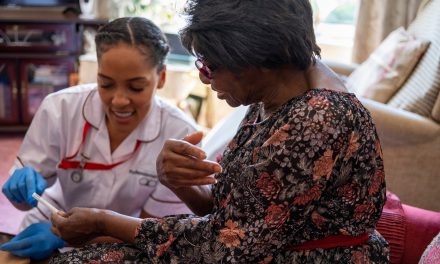By Tempest Wright
It’s easy to take internet access for granted, especially as our lives grow more digitized by the year, while technology advances. Access to high-speed internet is common in metropolitan areas where internet service providers (ISPs) offer higher bandwidth packages, and Wi-Fi in public areas, such as libraries and restaurants, is found on every corner. However, those who live in rural areas are usually left out of the high-speed equation, and their cellular service isn’t strong enough to pick up where broadband drops off. Additionally, many ISPs choose not to install broadband cables in rural areas because they feel they won’t get a return on the costly investment. Thus, those in small towns often have unreliable internet, barring them from information, education in the midst of the COVID-19 crisis, and connection to healthcare providers and services.
In 2016, the Human Rights Council of the United Nations General Assembly reported that internet access is a basic human right that enables individuals to exercise their right to free speech. Universal broadband could possibly be the key that unlocks greater access to healthcare, via telehealth, in underserved rural areas.
According to the Centers for Disease Control and Prevention (CDC), more than 15 percent (49.2 million) of the United States population live in rural areas. The United States Department of Agriculture (USDA) states that high-speed internet is vital in rural areas in that it “acts as a catalyst for rural prosperity” by upgrading communication between healthcare centers and their patients. However, as reported by the Federal Communications Commission (FCC), 80 percent of the 24 million Americans without reliable internet live in rural areas.
Due to this disparity, the FCC, the Health and Human Services Department (HHS), and the USDA have created the Rural Telehealth Initiative and the Rural Telehealth Taskforce to close the broadband gap and bring greater access to healthcare in rural America. Not only do rural residents lack broadband in their homes, rural healthcare facilities struggle as well.
Telehealth expands across a wide variety of services, including processing payments, scheduling future appointments, and seeing patients via video call. During a pandemic, these services are crucial in limiting the spread of COVID-19, especially for rural areas that are already hit hard by the virus. Adequate high-speed internet is not only crucial during a pandemic, it is a solution to the ongoing shortage of healthcare professionals in rural America. Many rural citizens can’t get the care that they need because there simply aren’t enough doctors available. If reliable broadband is established, rural residents won’t have to drive an minimum of 20 minutes just to get to the nearest hospital. This is impactful, as many rural residents don’t have reliable transportation in addition to not having the internet.
Access to telehealth will also keep healthcare facilities from having to close their non-emergency services – which make up the bulk of their funding – in the midst of a pandemic. The Centers for Medicare and Medicaid Services (CMS) has proposed that Medicare coverage be expanded to include telehealth services, but the agency also plans to eliminate CPT codes that were created during the COVID-19 pandemic in order to cover new telehealth services. CPT codes are numerical codes that identify medical services and procedures by qualified healthcare professionals (QHPs). For every stride the U.S. government makes to bring broadband and telehealth to rural areas, they are under an intense microscope to ensure they make good on their promises and not leave rural America behind.
While the availability of broadband in rural areas is important, affordability is just as imperative. According to the Pew Research Center, more than half of low-income Americans worry about the ability to pay their broadband bills. This is where the idea of universal broadband comes into play. Universal broadband would make broadband a public utility, like water or electricity. It would allow municipalities to provide their own internet services rather than rely on ISPs that are capable of inflating their prices and overcharging customers, and slowing down or blocking their internet services altogether.
Reliable high-speed internet has the potential to enhance the quality of life for rural citizens across the country. From telehealth to information, education, creative industry, and agriculture, broadband has the potential to change lives and keep people – especially the elderly and disabled – from being disenfranchised and unserved just because they don’t live in a metropolitan area. This is why the United Nations emphasizes that high-speed internet is a human right, not just a private luxury.
Outside of government intervention, partnerships between local governments and cable companies, community calls to action, developments among ISPs (such as fixed wireless service), and rural programs to improve broadband mapping are all working to close the digital divide between rural and urban Americans.
Earlier this summer, Governor Mike Parson announced the Rapid Broadband Deployment Initiative to expand broadband for communities across the state of Missouri. The initiative is being supported by the Coronavirus Relief Fund and will allocate $5 million in grants to reimburse internet providers that expand their services. Governor Parson stated, “We are working hard every day to connect as many Missourians as possible to high-speed internet. Online options are increasingly important during this time, and it is critical that our citizens have the resources needed to work, learn, and receive healthcare.”








